Can You Watercolor With Acrylic Paint
Mixed Media: Combining Watercolor and Acrylic in Painting
Acrylic and watercolor might seem equally if they orbit in different artistic solar systems. Each is suited to very dissimilar styles of painting.
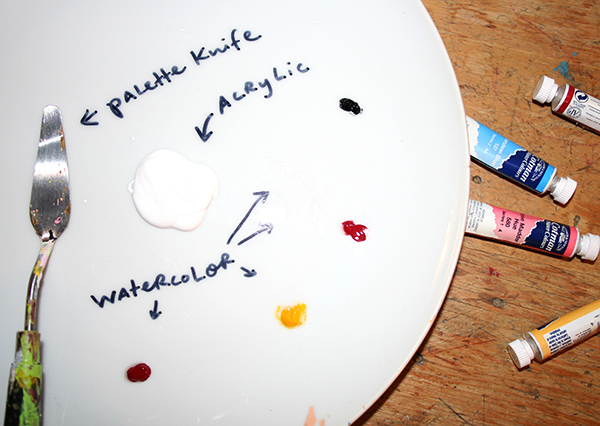
Acrylic is a medium that dries with a flat, opaque, about plastic-like consistency, whereas watercolor is fluid and creates natural tonal variations based on the corporeality of water added. But magic can happen when you combine these very different types of paint.
Set to be inspired? Hither are just a few ways y'all can combine acrylic and watercolor to create luminous works of art.
Mixing acrylic with watercolor
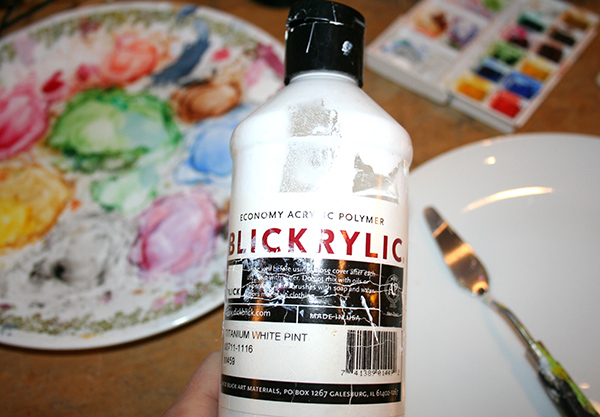
By mixing acrylic with watercolor, y'all can create paint with very unique qualities of colour and opacity, that tin be adjusted based on the ratio of the paint types and water. All you lot take to practice is gear up a palette with several colors of watercolor, and using a palette knife, mix them with a dab of acrylic.
Create stunning, vibrant colors!
<!–

Mix the colors y'all're dreaming of using only a scattering of paints.Enroll Now »
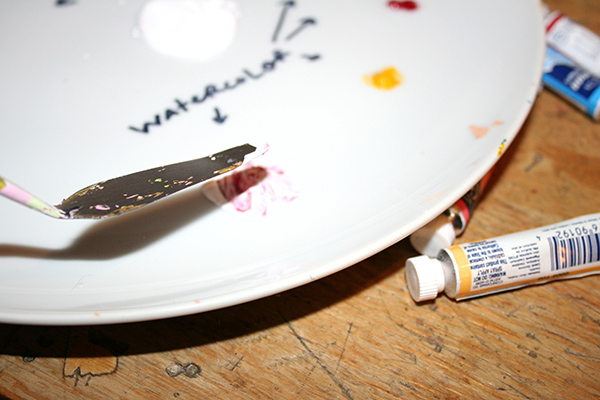
Adjust the ratio of watercolor to acrylic until yous've reached a colour that pleases y'all. Depending on the ratio of colors, you can attain dissimilar textures and finishes with your paint. For example:
- A lot of watercolor with only a touch of acrylic volition give you a sort of "fortified watercolor" look–more solid and opaque than regular watercolor, but maintaining the natural variations of color and tone every bit it is painted beyond the paper.
- More acrylic with a touch of watercolor is more subtle, but you volition attain more frail tones than you lot would with just straight-out acrylic. Information technology's almost like you make a more than "painterly" acrylic.

You lot tin can experiment fifty-fifty more with mixing acrylic and watercolor, testing how it might await to paint with a semi-mixed color combination, or testing the upshot when you lot dilute the paint with more than or less water.
Notes:
- While white acrylic will piece of work with any colour, you can also apply a colored acrylic paint for unique results.
- One time dry out, consider this paint permanent–unlike watercolor, yous won't exist able to revive information technology on your palette by adding more water, so exist sure to mix enough of each colour.
Watercolor background, acrylic foreground

Watercolor and acrylic can be used in tandem to create dimensional works of art. Y'all can create a fluid, colorful background in watercolor, and so use opaque acrylic to paint forms that pop on height of the watercolor. From simple icons such as a heart painted in white acrylic atop a watercolor rainbow (pictured below), to more complicated scenes with characters painted in acrylic over a cute backdrop, this is an easy mode to get a less "flat" effect by combining media.
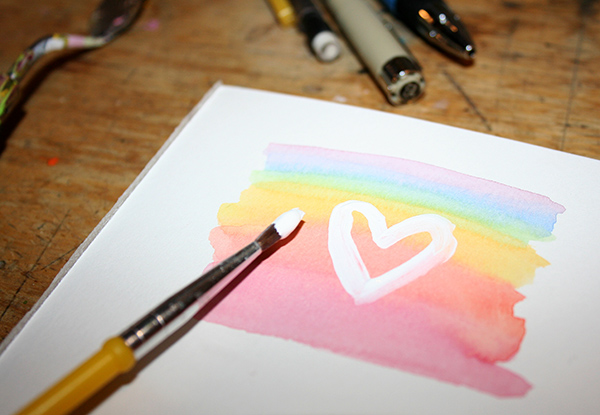
Acrylic on acme of moisture watercolor

By painting with acrylic on height of still-wet watercolor, you tin can attain some very pretty, sheer-looking results. For instance, on the above image, white acrylic paint is applied over a however-moisture wash of blue watercolor paint. Because the watercolor is however quite wet, the color is gently combined with the white acrylic paint, giving information technology a semi-transparent look, less apartment than simply painting white clouds atop a dried watercolor surface, which would dry out opaque.
Watercolor on tiptop of stale or by and large stale acrylic
In that location are several means to utilize watercolor on summit of dried acrylic.
Ghostly images
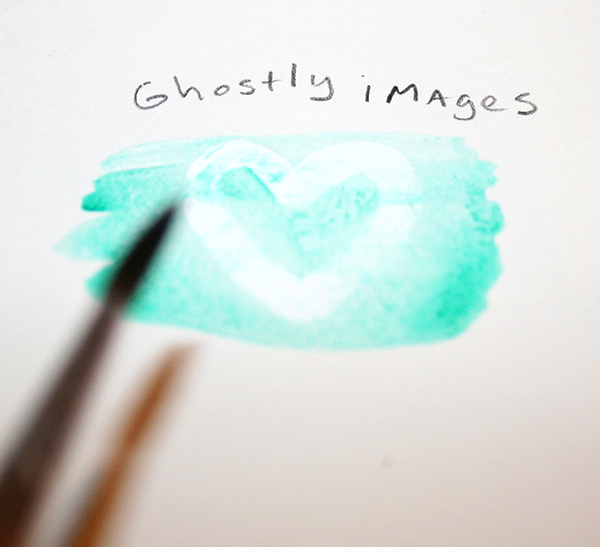
Yous tin create ghostly images by painting watercolor over dried acrylic. For instance, in the higher up image, a center was first painted in white acrylic on a sheet of Bristol board. Information technology doesn't look like much, until a watercolor wash is applied over the acrylic. If the acrylic is completely dried, it will show through the watercolor unevenly, giving you lot a mysterious-looking image; if the acrylic is still slightly wet, the watercolor will give it a ghostly fuzz effectually the edges. Either way, this effect can be put to good use when creating subtle imagery.
Antique expect
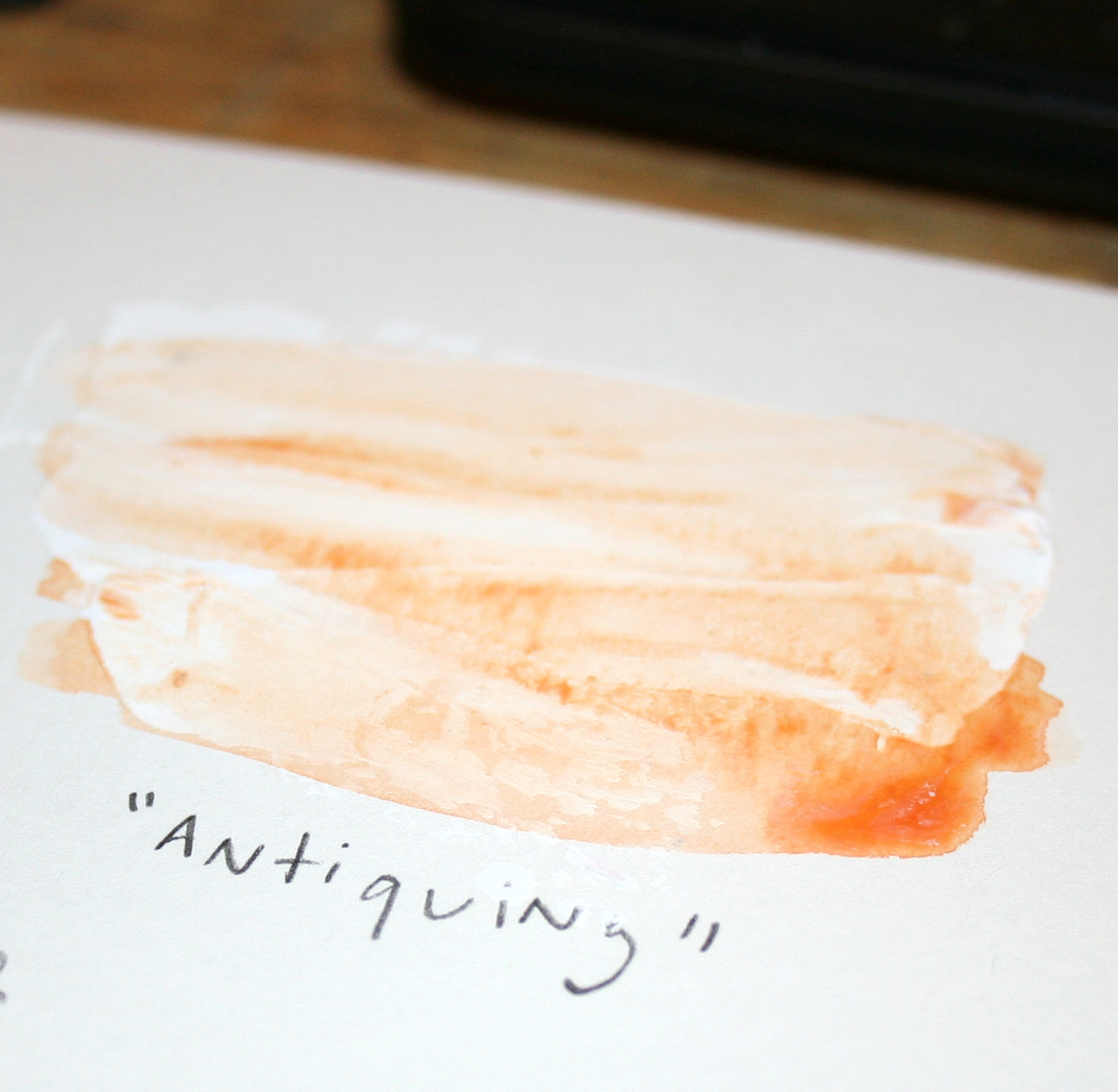
If yous pigment a larger area with acrylic paint, you tin can create a sort of antique look past painting over it with watercolor paint. This method is particularly helpful when creating architectural elements in a painting, but can be used whenever yous desire to requite an object a patina-style finish. While white is used in the above example, you can use whatsoever sort of color combination–for case, information technology might be well suited to creating an area of mint light-green acrylic and covering it with copper watercolor, or vice versa, to create an image such every bit the Statue of Liberty.
Correcting mistakes
It bears mention: acrylic can as well exist employed to fix mistakes in watercolor paintings. Its opacity can be practical to comprehend up errant paint marks quite easily.
Accept you ever combined acrylic and watercolor in a painting?
<!–
Create stunning, vibrant colors!

Mix the colors you're dreaming of using just a handful of paints.Enroll Now »
Source: https://www.craftsy.com/post/watercolor-and-acrylic/
Posted by: pearsonthimemper1969.blogspot.com


0 Response to "Can You Watercolor With Acrylic Paint"
Post a Comment